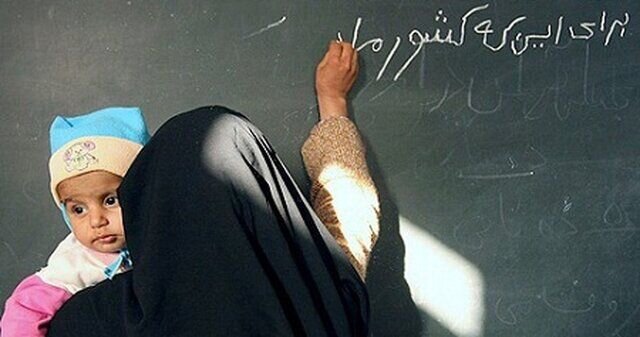Literacy growth rate in Iran 2.5 times the world average

TEHRAN –In the past four decades, the growth of literacy in the world has been about 18 percent, while in the same period, this figure in Iran has been 50 percent, IRNA reported.
Nearly one year after the 1979 Islamic Revolution, the Literacy Movement Organization was established by the order of Imam Khomeini with the aim of eradicating illiteracy.
At that time more than half of Iran's population, over the age of six, was illiterate. Now, Iran is on the verge of removing illiteracy.
Before the Islamic Revolution, a great number of children were deprived of attending school. With the population growth back then, the number of illiterate people increased.
Literacy Movement Organization’s goals
Eliminating illiteracy in the country, promoting cultural independence, and educational justice, were among the most important goals in the formation of the literacy movement.
The gap between literate males and females was 23.4 percent, which has decreased to 6 percent.
The implementation of the general mobilization plan for literacy in 1990 increased the literacy rate to 97 percent in 2023.
In 1990, more than 4.1 million illiterate people were educated within a decade, and in 1996, the literacy rate in Iran reached 79.5 percent (an 18 percent increase).
In 2015, 2016, and 2017, the figures reached 84.6 percent, 84.8 percent, and 87.6 percent respectively.
In 2021, the figure was 90.5 percent (in the age group of six and older).
These figures show a 42.5 percent increase in literacy rate after the Islamic Revolution. In 1976, 48.8 percent of those aged 10-49 (about 51 million people) were literate, while the figure was 94.7 percent in 2016, a 46 percent growth, reaching 97.1 percent in 2021.
Minimizing the literacy gap
To achieve educational justice in urban and rural areas, 55 percent of literacy activities were allocated to rural areas in the past 39 years. As a result, the literacy index in deprived areas of the country increased from 65.4 percent to 90.8 percent.
At the same time, the literacy rate in rural areas increased from 30.5 percent to 78.5 percent. In other words, the literacy rate increase in rural areas was accelerated and the difference between rural and urban literacy rates decreased from 34.9 percent in 1976 to 12.3 percent in 2016. The figure changed to 11 percent in 2021.
Meanwhile, the literacy movement did not fail to consider foreign nationals, especially Afghans, as some one million refugees have become literate in the past years.
Over the past years, the Literacy Movement Organization has implemented projects that have been effective in blocking the causes of illiteracy and have been able to promote literacy in different age groups and strata, including foreigners, prisoners, soldiers, parents of illiterate students, employees, workers and women who are the heads of the household.
Despite all these efforts, some two percent of people have remained illiterate due to various reasons such as lack of learning ability.
As the new definition of "literacy" is no longer confined to reading and writing, the first mission of the literacy movement is not to overcome basic illiteracy.
MT/MG

Leave a Comment